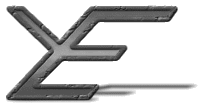Currently there are many different forms of collaboration and co-operative authoring, and all of the computer-based forms of collaboration have a basis in manual pen/pencil and paper-based collaboration. There are some products such as Microsoft Word 2000 that provide some web integration within the word processor, the problem with this though is that most of the useful features are limited to working with their own products. I have yet to see any that go beyond simple group collaboration (with the occasional ability to publish limited sets of information automatically), and make it possible to work fully on the Web, without requiring specific proprietary programs installed on the computers accessing the information.
Currently there are two common methods for creation of a group document (word processor file, source code, etc). Other methods of group document creation will be looked at shortly. The first common method is to write a portion of the document and pass it along by email (this requires everyone to have the email addresses of everyone else). Each person adds to the document when they have it, or they make changes to an original document and then an editor combines all the changes. The second common method is to use a shared directory where everyone in the authoring group can access to edit the document. This requires everyone who is to collaborate on the document to use the same program to edit the document, and requires them to turn on the change tracking mechanism.
One problem with this approach is that each of the applications used to edit the document must be capable of reading and writing the file formats produced by all of the other applications. Even if all the authors use the same editing application, different versions of the same program can cause incompatibility problems. Often problems such as these only show up after continued use.
| Previous: | 3.07 Less successful areas |
| Next: | 3.09 Version tracking |
